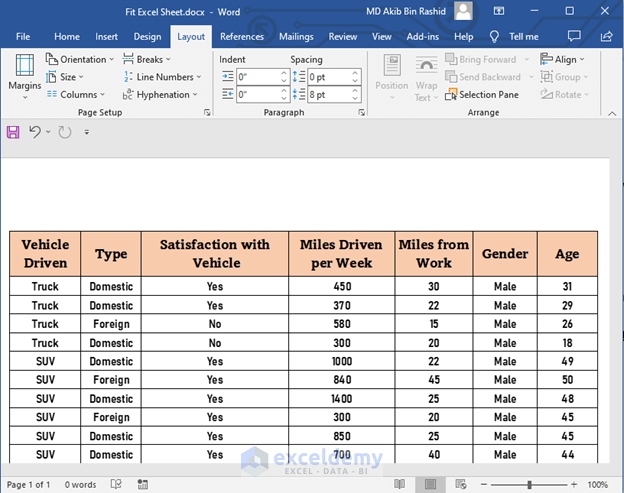Fit Excel Sheet on One Page in 2013: Easy Steps

Whether you're preparing a presentation, generating a report, or managing your daily work, printing an Excel sheet correctly can make all the difference in how your data is perceived. One common issue many Excel users face is fitting their extensive datasets onto a single page for a cleaner, more professional printout. Let's dive into some easy steps to ensure your Excel sheet fits perfectly on one page in Excel 2013.
Preparation for Printing

Before you can fit your worksheet onto one page, here are a few preliminary steps to consider:
- Organize your data: Delete unnecessary rows, columns, or duplicate data to streamline your sheet.
- Check your page layout: Select the correct orientation (Portrait or Landscape) based on your data layout.
- Adjust margins: Smaller margins allow more room for your data but ensure it’s still readable.
💡 Note: Ensure that your data is in the correct format and all unnecessary cells are cleared or hidden to avoid clutter.
Fit Excel Sheet to One Page

Follow these steps to fit your worksheet onto one page:
-
Go to Page Layout: Click on the 'Page Layout' tab in the Ribbon.
-
Page Setup: In the 'Page Setup' group, click on the small arrow in the bottom right corner to open the 'Page Setup' dialog box.
-
Fit to: Under 'Scaling', select 'Fit to:' and enter 1 page wide by 1 page tall.
-
Adjust Sheet Options: Navigate to the 'Sheet' tab in the dialog box to control print areas, gridlines, and headings if necessary.
-
Preview: Use the 'Print Preview' to see how your sheet will look on one page.
💡 Note: Keep in mind that fitting to one page might result in reduced font sizes or narrower columns, impacting readability.
Managing Data Overflow

If your data still overflows:
- Shrink Fonts: Decrease font sizes selectively to fit more data onto the page.
- Adjust Column Width: Reduce column widths, but ensure key data remains visible.
- Row Heights: Sometimes, adjusting row heights can help squeeze the data in.
Printing Complex Spreadsheets

For spreadsheets with charts, images, or multiple tables, here's what you can do:
- Define Print Areas: Use the 'Print Area' tool to select and print only necessary data.
- Remove Unnecessary Elements: Hide or remove any non-essential elements like headers, footers, or large images.
- Prioritize Data: Print critical data first and consider secondary data for additional pages if needed.
💡 Note: If complex spreadsheets cannot fit, consider using techniques like Excel's 'Page Break Preview' to manually adjust the print area.
Manual Adjustments for Better Printing

If Excel's auto-fit feature does not suffice, here are some manual adjustments:
- Page Break Preview: This tool in Excel 2013 allows you to view and adjust where pages will break.
- Scaling: Use the 'Custom Scaling' options to manually scale down your data or adjust page breaks.
- Print Preview: Use this feature to check your adjustments in real-time.
💡 Note: When manually adjusting, remember to strike a balance between fitting content and maintaining readability.
By now, you should have all the knowledge needed to fit an Excel sheet onto one page effectively. From organizing your data to scaling and manual adjustments, these steps help ensure your printouts are both concise and professional. Remember to use the 'Fit to' feature wisely and consider readability as you adjust settings. Following these guidelines will allow you to create printouts that convey your data clearly and effectively, no matter the complexity or size of your Excel spreadsheet.
What if my worksheet still doesn’t fit after scaling?

+
If scaling doesn’t fit your worksheet, consider reducing non-essential data, adjusting page margins, or using multiple pages if the data is too extensive.
How can I ensure my charts and tables fit on the same page as my data?

+
Shrink charts by reducing the size of axes, titles, or legends. For tables, adjust row and column sizes or consider printing them separately.
Can I print a subset of my worksheet?

+
Yes, you can define a print area in Excel 2013, allowing you to print only selected ranges of your worksheet.
Will reducing font size affect the data’s readability?

+
Yes, reducing font size can make data harder to read. Consider a balance between fitting content and maintaining readability.
How often should I use the ‘Fit to’ feature?

+
Use the ‘Fit to’ feature when you need to fit a relatively small dataset onto one page, but be cautious as it may impact readability.



